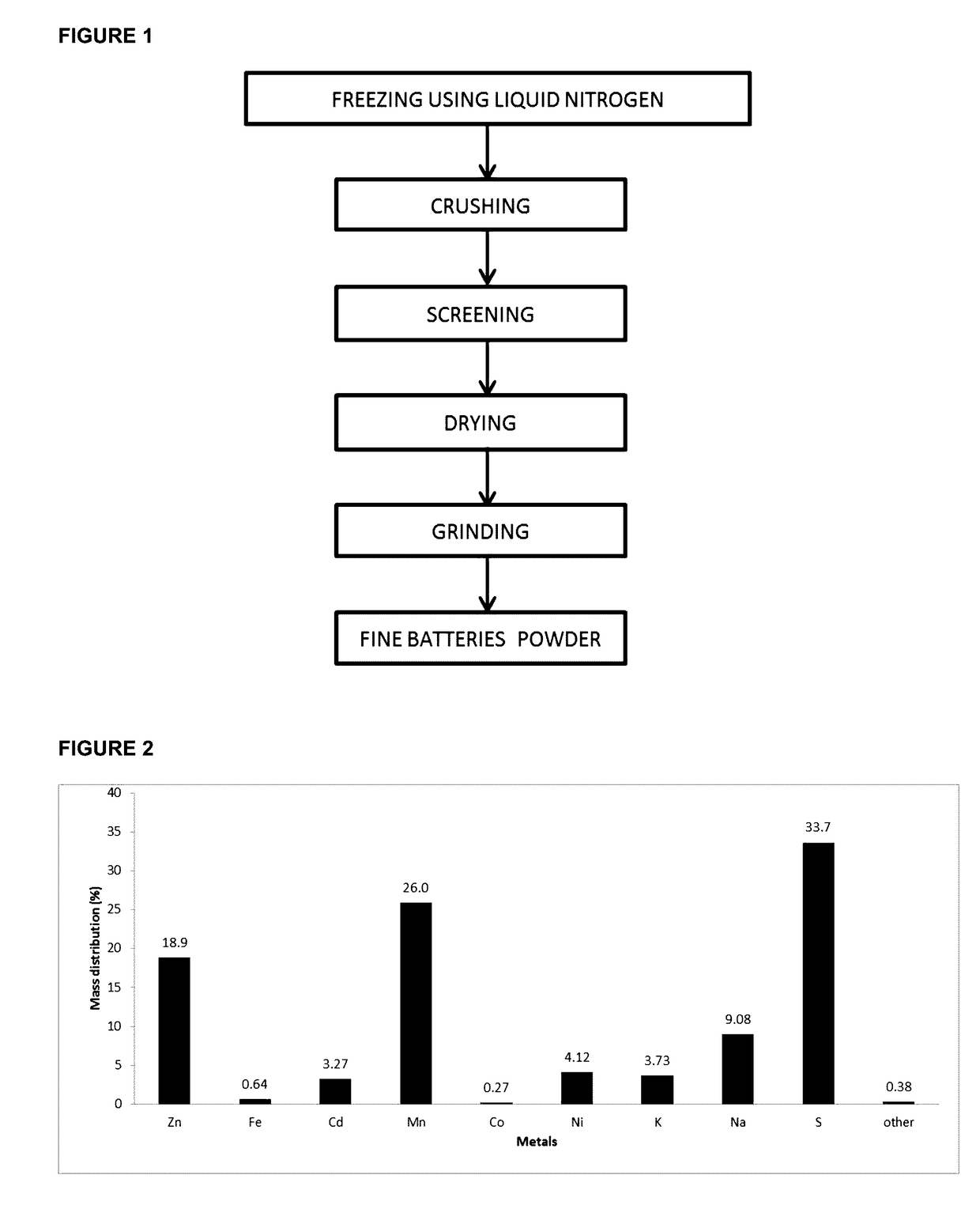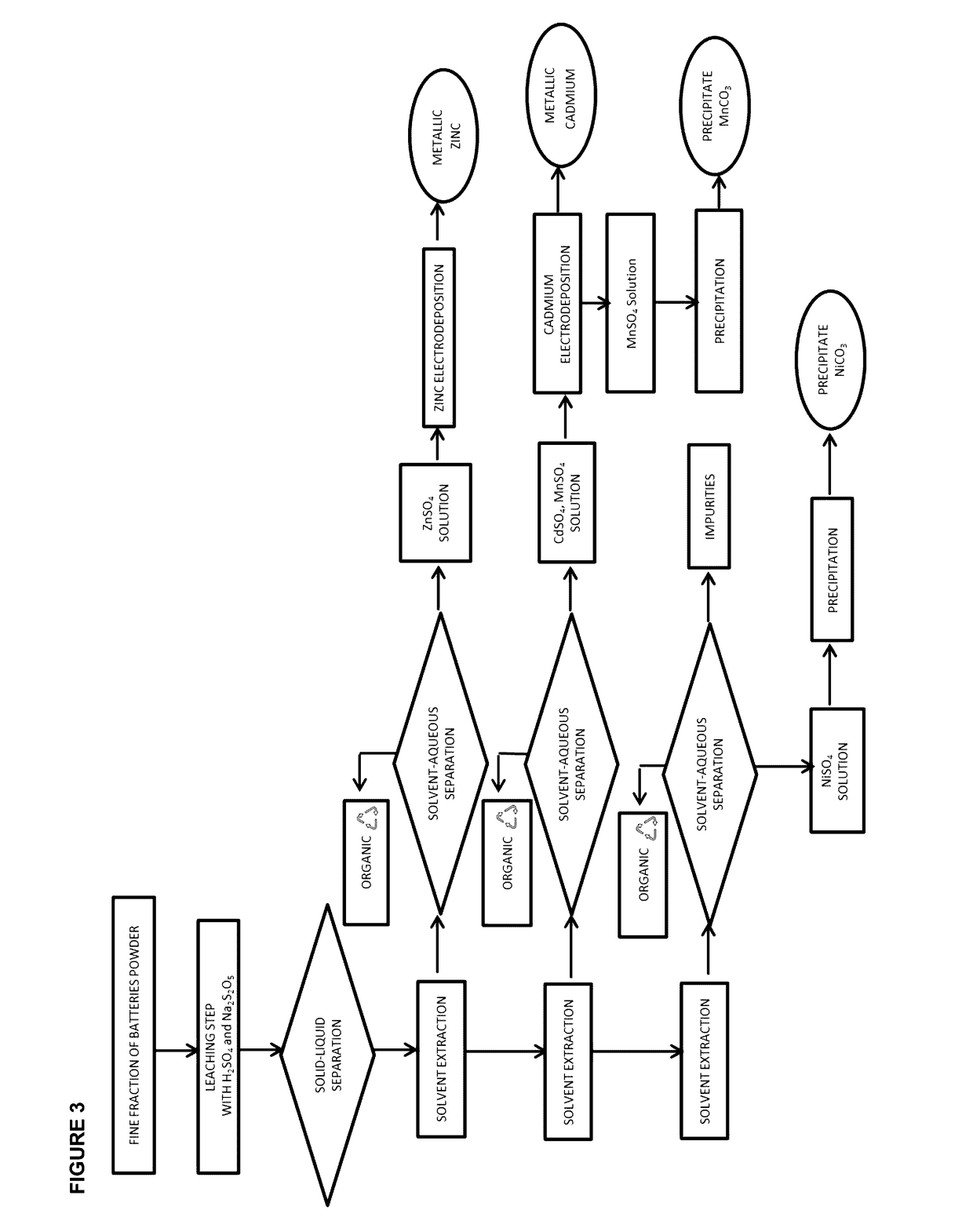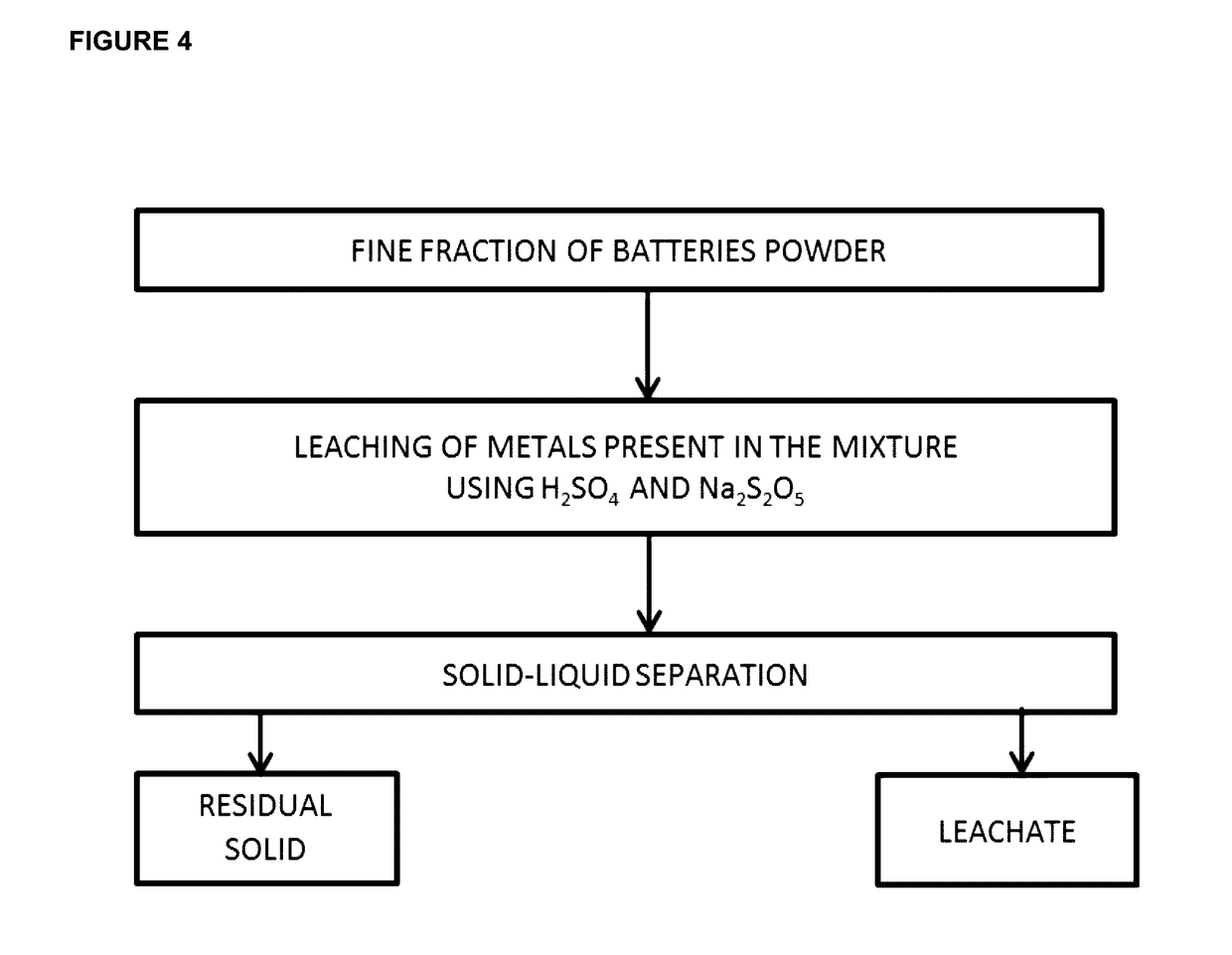Method for recycling valuable metals from spent batteries
- Summary
- Abstract
- Description
- Claims
- Application Information
AI Technical Summary
Benefits of technology
Problems solved by technology
Method used
Image
Examples
example 1
Recovery of Metals from a Mixture of Spent Batteries
[0085]Refer to FIG. 1, the collected spent batteries were frozen using nitrogen liquid and were then crushed in order to remove steel castings. The fine particles were screened through a 1-2 mm aperture sieves, dried at 60° C. and then grinded. The fine particles obtained huge amounts of Zn, Mn, Cd and Ni. The leaching step was carried out by mixing 109 g of the fine particles with 49 g of sodium metabisulfite and 1 L of a solution of H2SO4 (1.34 M) as shown in FIG. 4. The leaching process was conducted during 45 minutes at ambient temperature. The solid cake was then separated from the liquid by filtration. According to our experiments, 1 L of the leaching solution was composed of Mn (28.6 g), Zn (20.8 g), Cd (3.6 g), Ni (4.5 g), Fe (0.7 g) and Co (0.3 g) and the pH of the solution was equal to 1.
[0086]From FIG. 5, the pH of the leachate was then adjusted at 2.5 by the addition of a solution of NaOH (10 M), which w...
example 2
Recovery of Metals from a Synthetic Solution Representative of a Mixture of Spent Batteries
[0094]This example related to the recovery of valuable metals (Cd, Mn and Ni) from a synthetic solution is different from Example 1 where the recovery of cadmium, manganese and nickel was conducted with a real leaching solution emerging from the application of the leaching process to a mixture of spent batteries. The composition of the synthetic solution presented herein was slightly different from those obtained from the leaching of valuable metals from a mixture of spent batteries to simulate the behavior of the recovery process with variation of the initial composition of spent batteries (alkaline, alkaline, Zn-Carbon, Ni—Cd, Ni—MH, Li-ion and Li—M batteries).
Recovery of Zinc
[0095]According to Example 1, 1 L of the leaching solution was composed of Mn (26.1 g), Zn (18.5 g), Cd (3.7 g), Ni (3.2 g), Fe (0.5 g) and Co (0.3 g) and the pH of the solution was equal to 1.
[0096]From FIG. 5, the pH ...
example 3
Recovery of Zinc and Manganese from Alkaline Spent Batteries
[0104]The process developed for the recycling of valuable metals from mixed spent batteries can be adapted for the recovery of Zn and Mn from alkaline spent batteries which are considered as the majority of commercial battery products. The recycling process used for alkaline spent batteries consists of: a) crushing and grinding; b) screening to obtain the fine particles; c) acid extracting; d) selectively recovering Zn by electrowinning; e) removing residual Zn by precipitation using NaOH and Na2S; e) solid-liquid separation; g) recovering Mn by precipitation in a carbonate form using Na2CO3.
[0105]The present example is adapted to treat spent alkaline batteries. The recycling of Zn and Mn from alkaline spent batteries process comprises the steps of:[0106]Crushing and grinding the alkaline spent batteries.[0107]Screening to retain the coarse particles and grinding the fine particles to obtain a fine powder.[0108]Acid extract...
PUM
| Property | Measurement | Unit |
|---|---|---|
| Temperature | aaaaa | aaaaa |
| Temperature | aaaaa | aaaaa |
| Temperature | aaaaa | aaaaa |
Abstract
Description
Claims
Application Information
 Login to View More
Login to View More - R&D
- Intellectual Property
- Life Sciences
- Materials
- Tech Scout
- Unparalleled Data Quality
- Higher Quality Content
- 60% Fewer Hallucinations
Browse by: Latest US Patents, China's latest patents, Technical Efficacy Thesaurus, Application Domain, Technology Topic, Popular Technical Reports.
© 2025 PatSnap. All rights reserved.Legal|Privacy policy|Modern Slavery Act Transparency Statement|Sitemap|About US| Contact US: help@patsnap.com



